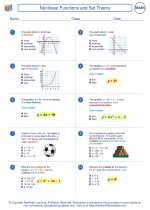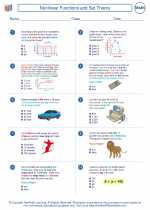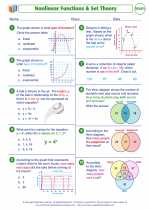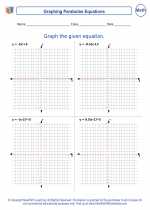Exponential Decay
Exponential decay is a mathematical concept that describes a process where a quantity decreases at a rate proportional to its current value over a constant time interval. It is commonly represented by the mathematical equation:
Y = A * e-kt
Where:
- Y is the final amount at time t
- A is the initial amount at time t=0
- e is the base of the natural logarithm (approximately 2.71828)
- k is the decay constant
- t is the time elapsed
Key Concepts
1. Exponential decay represents a decrease in quantity over time.
2. The decay constant (k) determines the rate at which the quantity decreases.
3. The larger the value of k, the faster the quantity decreases.
4. The initial amount (A) and time (t) are important parameters for calculating the final amount (Y).
Example
Suppose a radioactive substance has an initial mass of 100 grams and its half-life is 10 days. Calculate the mass of the substance after 30 days, assuming exponential decay.
Using the formula Y = A * e-kt, we can calculate the final amount:
A = 100 grams (initial mass) t = 30 days k = ln(0.5) / 10 (decay constant, where ln denotes natural logarithm) Y = 100 * e-0.693 * 30 / 10 = 100 * e-2.079 ≈ 100 * 0.125 ≈ 12.5 grams
Study Guide
To understand exponential decay, focus on the following key points:
- Understand the concept of exponential decay and how it differs from exponential growth.
- Learn to identify the initial amount, decay constant, and time elapsed in a given problem.
- Practice using the formula Y = A * e-kt to calculate the final amount in various scenarios.
- Explore real-world applications of exponential decay, such as radioactive decay, population decline, and financial depreciation.
By mastering these concepts and practicing related problems, you can develop a solid understanding of exponential decay and its applications.
.◂Math Worksheets and Study Guides Seventh Grade. Nonlinear Functions and Set Theory

 Worksheet/Answer key
Worksheet/Answer key
 Worksheet/Answer key
Worksheet/Answer key
 Worksheet/Answer key
Worksheet/Answer key
 Worksheet/Answer key
Worksheet/Answer key
 Worksheet/Answer key
Worksheet/Answer key
